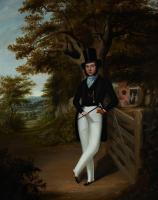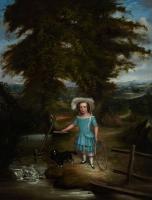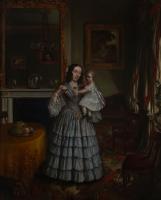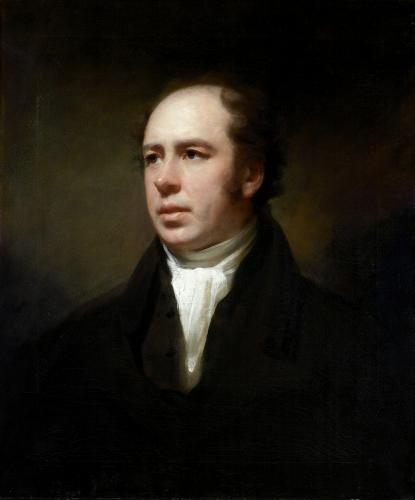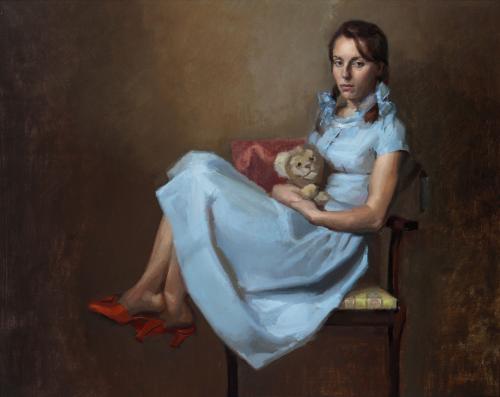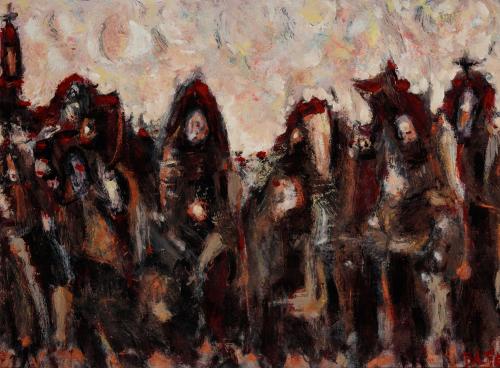
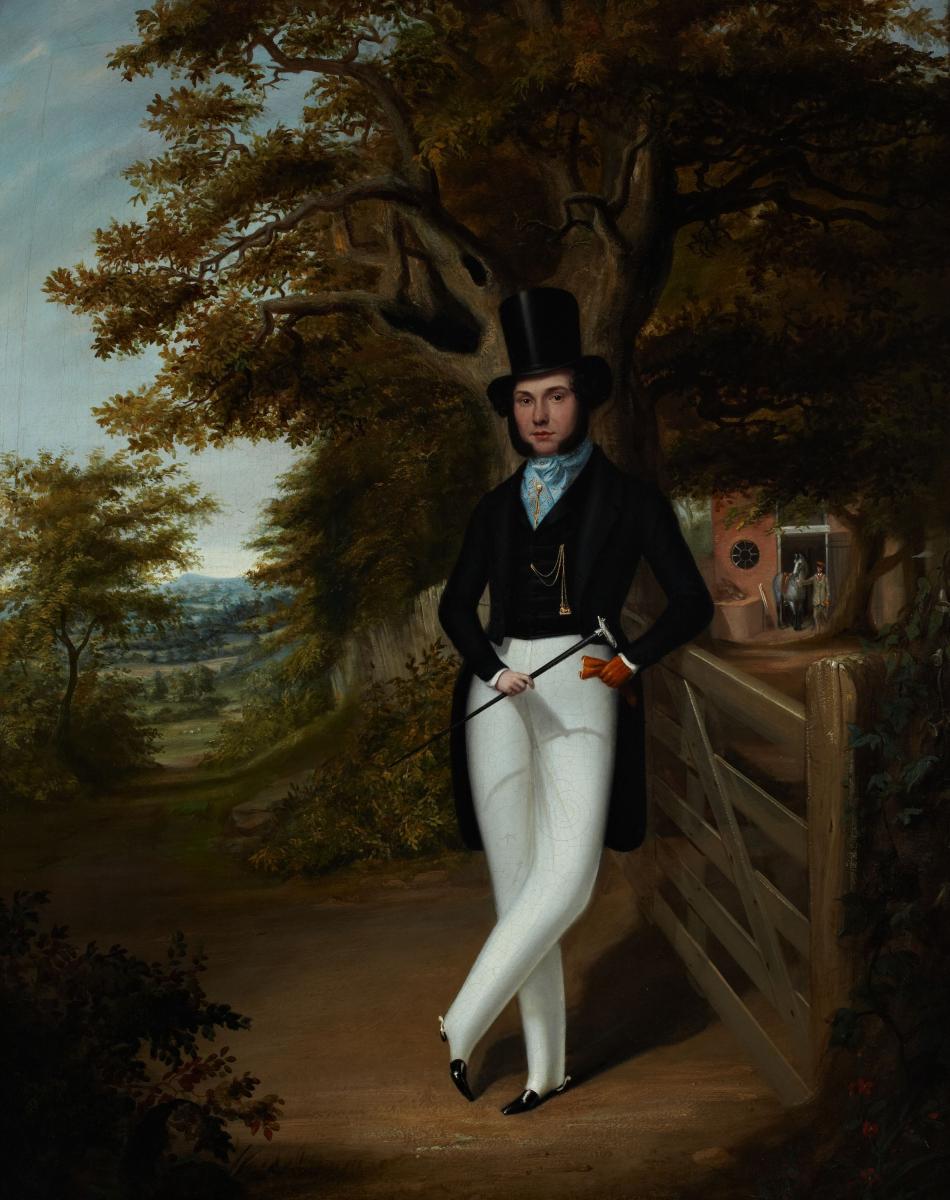
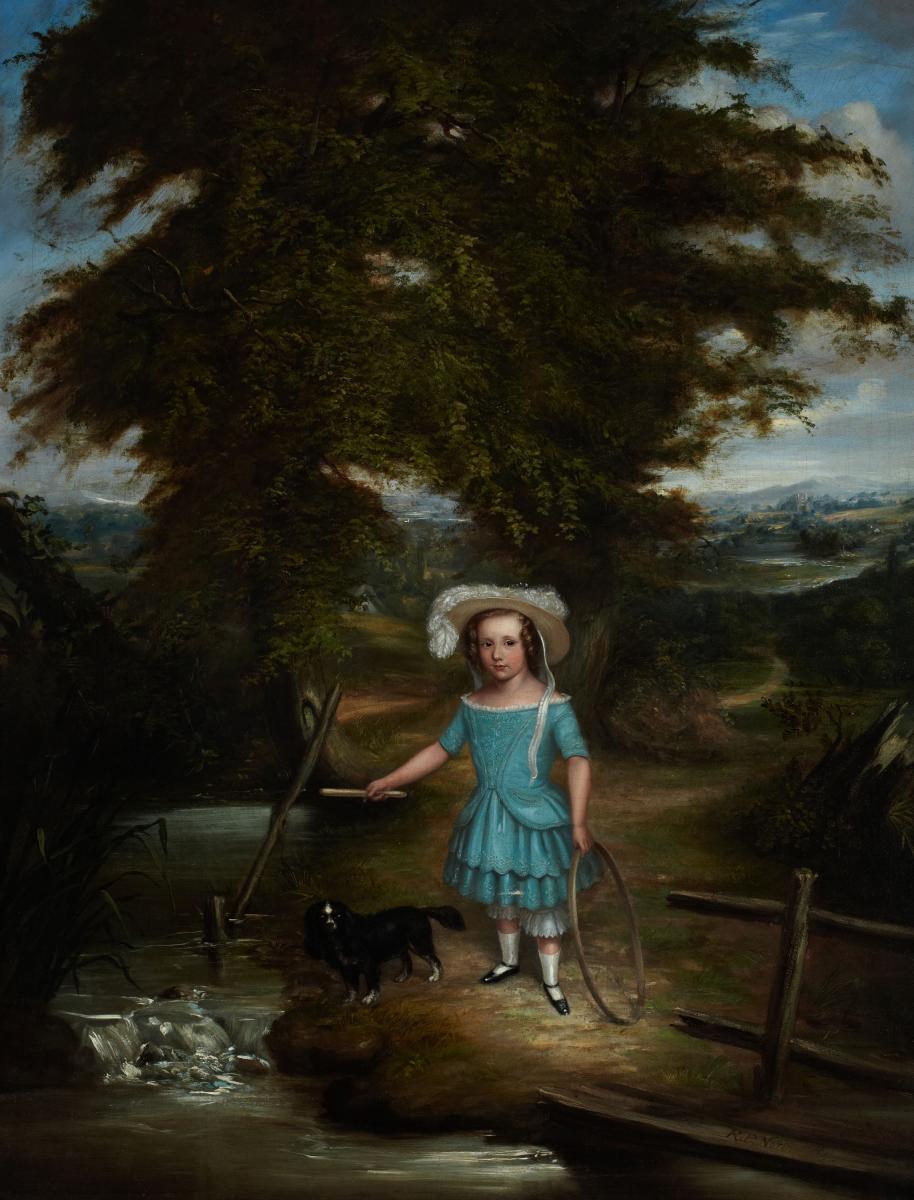
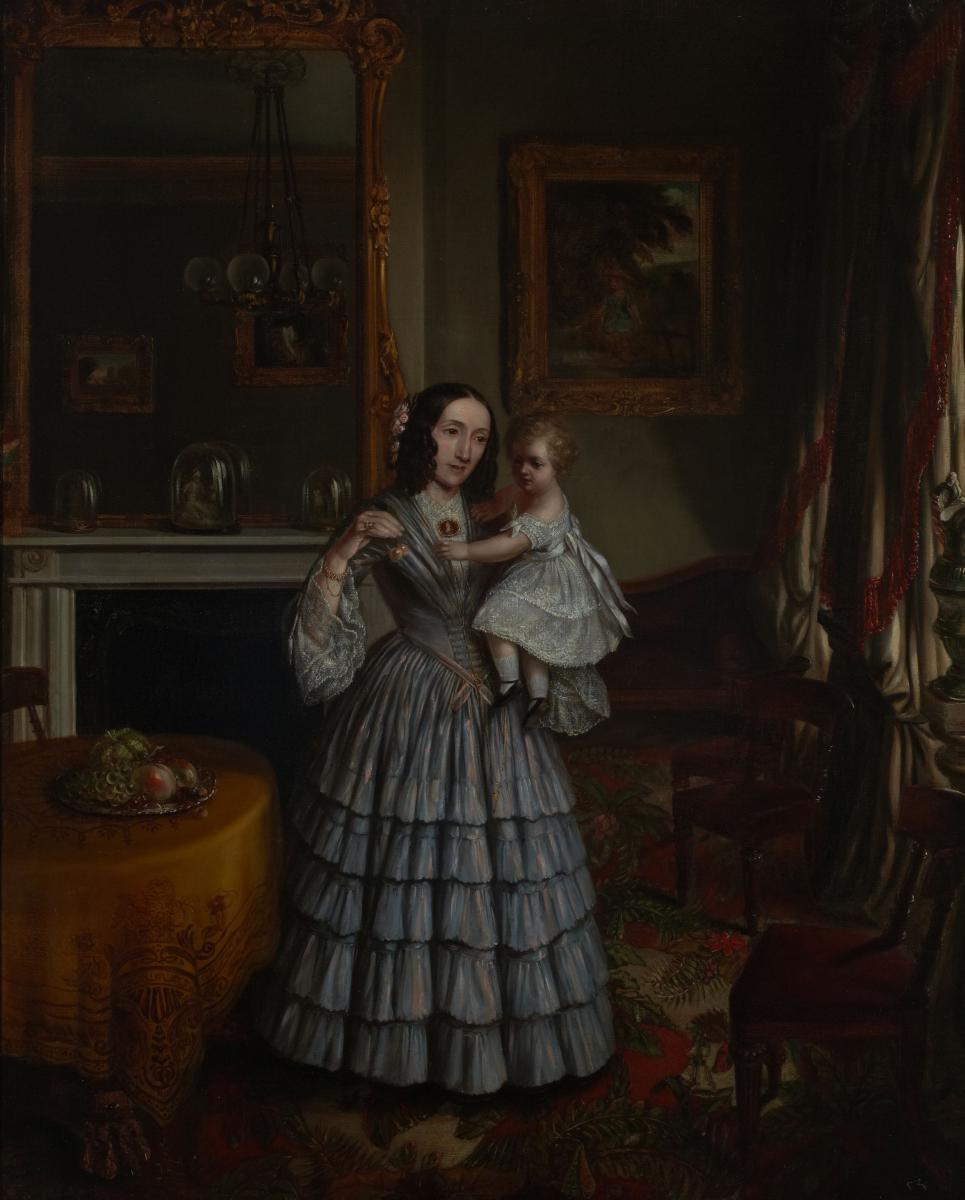
Price on application
This object is eligible for a Certificate of BADA Provenance
The BADA Standard
- Since 1918, BADA has been the leading association for the antiques and fine art trade
- Members are elected for their knowledge, integrity and quality of stock
- Our clients are protected by BADA’s code of conduct
- Our dealers’ membership is reviewed and renewed annually
- Bada.org is a non-profit site: clients deal directly with members and they pay no hidden fees
A gentleman prepared for a morning ride.
Richard Potter North.
This is from an unusual group of three portraits of an English country gentleman and his family, circa 1855. The other two are a portrait of his son with a hoop in a river landscape and a portrait of his wife with her infant daughter in the family drawing room. The portrait of the son is signed "R. P. North".
There is a nice touch which ties these three paintings together as a family group. In the portrait of the mother, the painting of the son hangs on the wall on the right of the picture. The mother is standing with a mirror on the wall behind her and in this is reflected the lower half of the husband’s portrait, easily recognisable with his white breeches and small, crossed feet in black boots with silver spurs.
R. P. North is an artist whose work is scarce and of whom little is recorded beyond the fact that he exhibited in London between 1856 and 1858. These three paintings came to light rolled up in an attic where they had remained for many years. It now seems that the artist is Richard Potter North who was born c1816 at Stanford-le-Hope or adjacent Orsett (in south Essex near Grays), the son of Richard North, a carpenter.
By the late 1830s the family had moved to Turner Street in Mile End Old Town (East London), and in the 1841 Census Richard was living there with his father and sister: he gives his profession as 'artist'. In 1847 Richard Potter North, artist, was married at St Mary's, Haggerston to Emma Ling, a publican's daughter. By the 1851 Census he had moved a short distance to '17 Saville Cottage' (probably an error for 'Saville Row'), on the Mile End Road, where he was living with his wife and three young children: he records himself as an 'Artist, in portraits, &c'.
Electoral rolls show he remained at 17 Saville Row until the late 1850s, but by 1861 he had moved with his family back out to Orsett, where he stayed there for the rest of his life. The practise of art had clearly failed to support the family, as his profession is now given as 'plumber and house decorator'. Local directories continue to list him as such from 1862 right through to 1890.
In the 1871 Census he is a 'plumber, painter, &c', in 1881 just a 'painter', and in 1891 a 'Painter, Grainer, [?sign] Writer, Gilder' - so in all probability a highly-skilled decorator. Interestingly, in the 1901 Census - when, at 84 years old, he must have been retired from his main trade - he lists himself once more as 'Artist (painter)'. This is the last trace of him until his death in February 1915, at the splendid age of 98: his estate was valued at a respectable £956.
I am most grateful to Osmund Bullock for this information.
Dimensions
Each oil on canvas, approximately 75 x 59 cms.The BADA Standard
- Since 1918, BADA has been the leading association for the antiques and fine art trade
- Members are elected for their knowledge, integrity and quality of stock
- Our clients are protected by BADA’s code of conduct
- Our dealers’ membership is reviewed and renewed annually
- Bada.org is a non-profit site: clients deal directly with members and they pay no hidden fees


